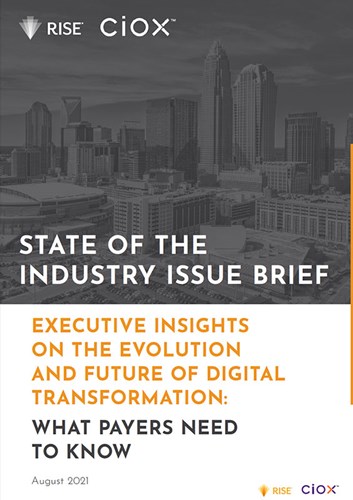In this white paper, we explore the opportunities, as well as the technical and strategic challenges that payers face on the path to achieve complete digital transformation in health data access, interoperability, and data-driven health care.

The health care industry has been relatively slow to catch on to the digital revolution compared to other industries. While health care organizations have invested in electronic health records (EHRs) over the past two decades, data typically remained siloed across organizations and in different formats, making it difficult to access and share information.
However, EHR adoption coupled with new interoperability mandates has set the stage for digital transformation in health data access, analytics, and digital engagement. The COVID-19 pandemic has accelerated those plans, forcing organizations to rapidly implement new processes and technologies to meet the needs of their patients and members. It has become clear across the industry that the path to digital health is complex but essential, creating long-term opportunities to provide faster access to data, better quality of information, reduced administrative burdens, and potentially lower costs. The data capture can also be used to better manage population health and address social determinants of health.
In this white paper, we explore the opportunities, as well as the technical and strategic challenges that payers face on the path to achieve complete digital transformation in health data access, interoperability, and data-driven health care.
Current landscape
Despite the increase in the number of providers adopting EHR systems, true interoperability across the disparate systems has yet to be realized. Organizations frequently use over a dozen different EHRs that don’t speak the same language, and records contain distinct file formats and a mix of structured and unstructured data. Therefore, it’s a complicated process to digitally retrieve the correct data.
As a result, in order to collect all required clinical information, a portion of medical record retrieval is still done via manual means, such as sending a chart request to a provider’s office by fax or mail. While the industry has attempted to use alternate means to minimize disruption for providers, the number of requests sent to provider offices is growing as the number of risk-bearing entities and risk adjustment practices increase.
If payers can work with providers to get digital access to clinical data, there are benefits for both parties. Digital access can e duce the need for provider administration in fulfilling requests and can also get medical records to payers more quickly and easily. Simpler and quicker exchange of structured clinical data can help payers better manage their members and ensure members are receiving the care they need.
Under this landscape, payers may want to find a partner that has direct access to a network of EHRs or EHR system (EHRS) platforms, or other means to obtain clinical data with automated chart extraction. Many providers now understand the value of working with a vendor in building a direct connection, especially to meet the increased demand of payer use case requests.
Click here to download the complimentary digital copy of the whitepaper.
